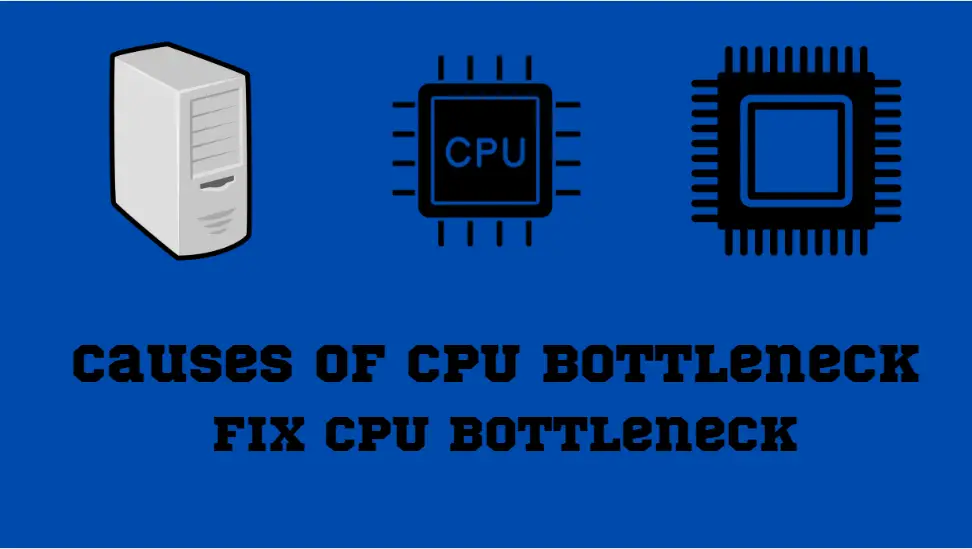How to Fix Discord Error: 'Installation Has Failed'

At some point, everyone has faced some sort of bottleneck when playing games. The most common ones are CPU and GPU bottlenecks. So, in this article, we’ll be discussing the many causes of CPU bottlenecks and various ways to deal with them. But before that, let's understand what a bottleneck is.
To understand that bottleneck, you’ll have to take a look at an actual bottle.
The top of the bottle is constricted and small. In bottles, this is done to maximize the practicality of the vessel. However, in the context of computers, the reason isn’t so good. Bottlenecking is a term used when one of the components of the computer isn’t performing on par with other components. This results in the computer slowing down. There are various types of bottlenecks. Let’s discuss the types and causes below.
Bottlenecks are caused by various hardware components. The most common bottlenecks are discussed below.
Subpar hardware isn’t always the cause of bottlenecks. There are multiple reasons for it. Some of them are given below, the most obvious being weak hardware of course.
Let's look few symptoms of CPU bottlenecks:
There are many ways to get rid of bottlenecks. We will discuss some below. But before going:
We would like to warn you that some of these processes involve changing the bios settings, therefore, they should be taken with caution.
Sometimes, the problem can be solved simply by rebooting the PC. As cliche as it sounds, rebooting the pc solves a lot of problems present in the PC. So, it should be the first go-to solution.
Driver updates are important. Drivers are the things that help the PC hardware components communicate with the software components. So, if those drivers are not up to date, we face many issues with the performance of the PC.
Sometimes, the fix is as simple as upgrading the CPU if you have the money for it. If you’re running a 2nd generation intel processor and seeing lags in games, it’s time for an upgrade.
A lot of CPUs are overclockable. You can check if it’s overclockable online. Go to the task manager. Go to the ‘Performance’ tab. Check out the version of the CPU. Here is my CPU version. (Take a picture and add it here). Now that you know about your CPU, head over to google and see if it is overclocking capable.
You might be noticing the problem only when you’re playing one game like Call of Duty: Modern Warfare. If that is the case, you might want to check the game for updates. This is because sometimes the game devs make mistakes with resource management. This is usually fixed quickly with another update.
Sometimes, it’s not the PC that’s the problem but what is running on the PC. Running multiple applications on a PC can falter even the best of PCs and CPUs. Therefore, it is always a good idea to end useless processes. This de-loads the CPU giving you a boost in performance. And it is also good for the PC’s Longevity.
Having a well-cooled CPU is not the exact solution to high CPU usage. However, cooling it well can prevent CPU throttling.
Thermal paste is the compound that is kept in between the CPU and the cooler. This tends to go dry over the years. So, if you have had your PC for a while but never bothered changing the thermal paste, it might be time to change that. You can read this interesting article to learn if you can use a PC without thermal paste.
An AIO (abbreviated All In One) is a liquid cooler used in CPUs. It is a liquid cooler that pumps cold water in a closed-loop system. They have two ends, the CPU block, and the radiator. The cold water reaches the CPU block and warm water reaches the radiator. The cold water cools the CPU better than air and might be good for your PC.
Sometimes CPU bottlenecks occur as a result of a virus/malware that excessively uses the CPU. Thus you should always use antivirus software. It might also be a good idea to not download games from sketchy sites to avoid getting them in the first place.
If there is improper coordination between the RAM, CPU, and other peripherals then you may face the problem of a CPU bottleneck. CPU (More correctly, APU) uses the RAM as a shared graphics memory. Upgrading the RAM gives the APU more space to work with. This means overall better performance. Another fix can be using a dedicated GPU instead of just the CPU. We’ll discuss that below.
Using the CPU for graphically intensive tasks like gaming is not a very good idea. Therefore, you might be better off with a dedicated GPU. This eases the load off the CPU as well as the RAM. While playing the game, keep an eye on your CPU and GPU use to spot any problems. If the problems persist, you might want to make a call to the nearest official call center.
There are multiple reasons why you might be seeing high CPU usage when gaming. The above fixes help deal with the problem in the most diverse ways. They also try to deal with as many problems as possible.